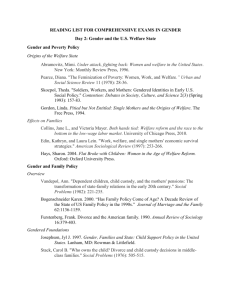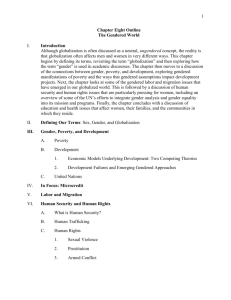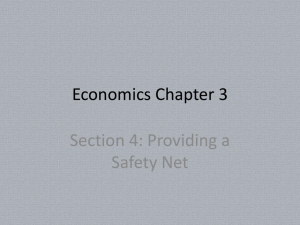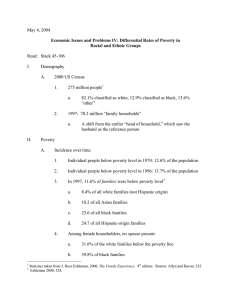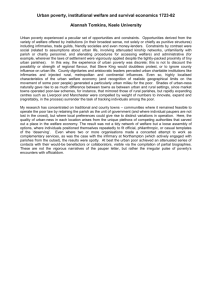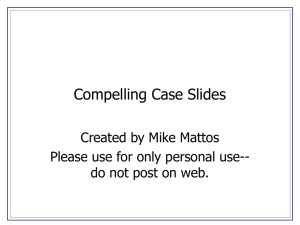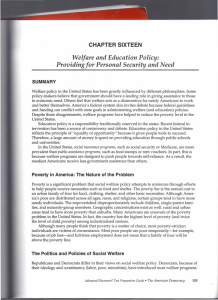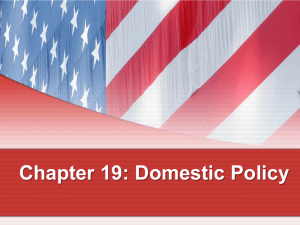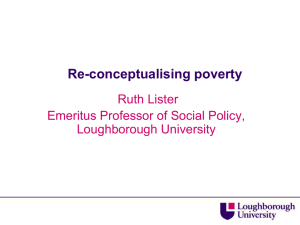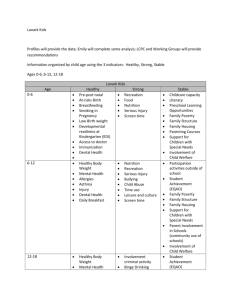welfare state
advertisement
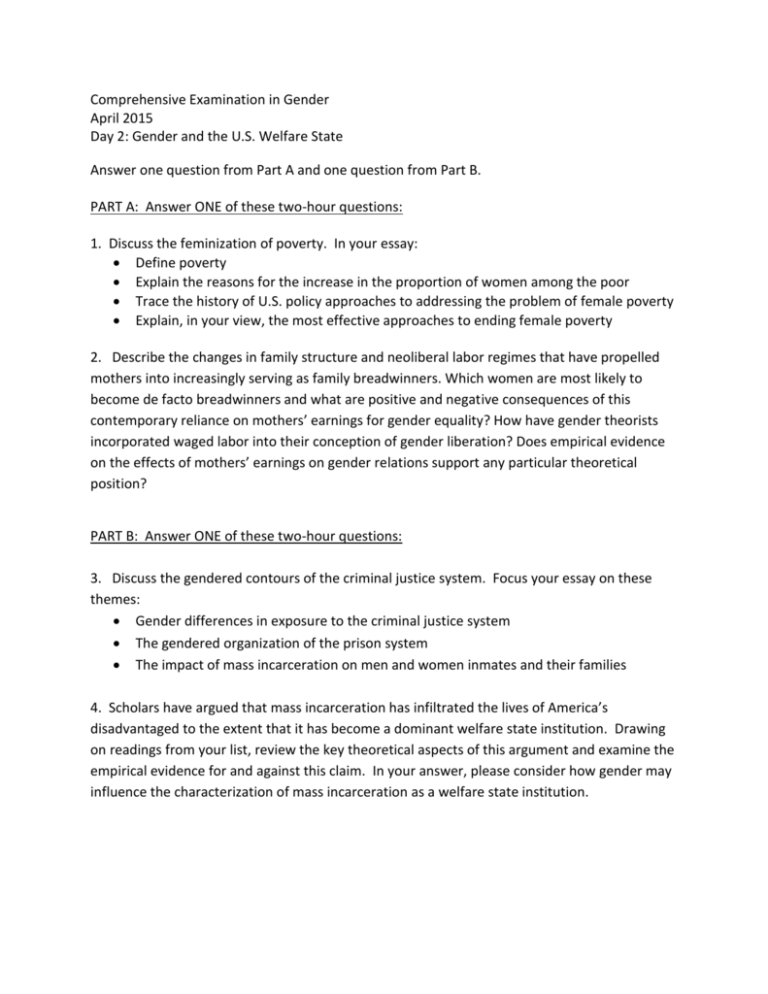
Comprehensive Examination in Gender April 2015 Day 2: Gender and the U.S. Welfare State Answer one question from Part A and one question from Part B. PART A: Answer ONE of these two-hour questions: 1. Discuss the feminization of poverty. In your essay: Define poverty Explain the reasons for the increase in the proportion of women among the poor Trace the history of U.S. policy approaches to addressing the problem of female poverty Explain, in your view, the most effective approaches to ending female poverty 2. Describe the changes in family structure and neoliberal labor regimes that have propelled mothers into increasingly serving as family breadwinners. Which women are most likely to become de facto breadwinners and what are positive and negative consequences of this contemporary reliance on mothers’ earnings for gender equality? How have gender theorists incorporated waged labor into their conception of gender liberation? Does empirical evidence on the effects of mothers’ earnings on gender relations support any particular theoretical position? PART B: Answer ONE of these two-hour questions: 3. Discuss the gendered contours of the criminal justice system. Focus your essay on these themes: Gender differences in exposure to the criminal justice system The gendered organization of the prison system The impact of mass incarceration on men and women inmates and their families 4. Scholars have argued that mass incarceration has infiltrated the lives of America’s disadvantaged to the extent that it has become a dominant welfare state institution. Drawing on readings from your list, review the key theoretical aspects of this argument and examine the empirical evidence for and against this claim. In your answer, please consider how gender may influence the characterization of mass incarceration as a welfare state institution.

